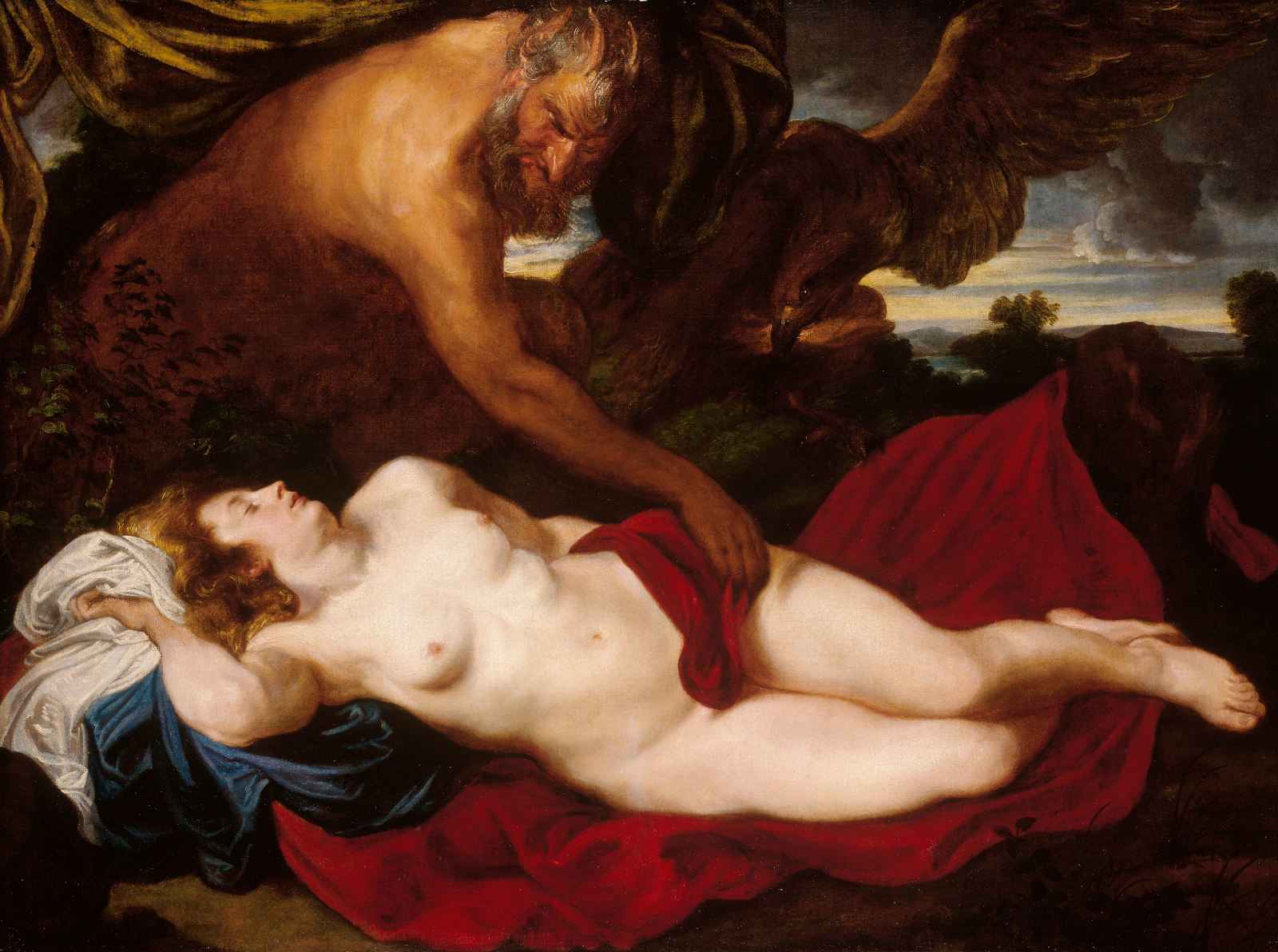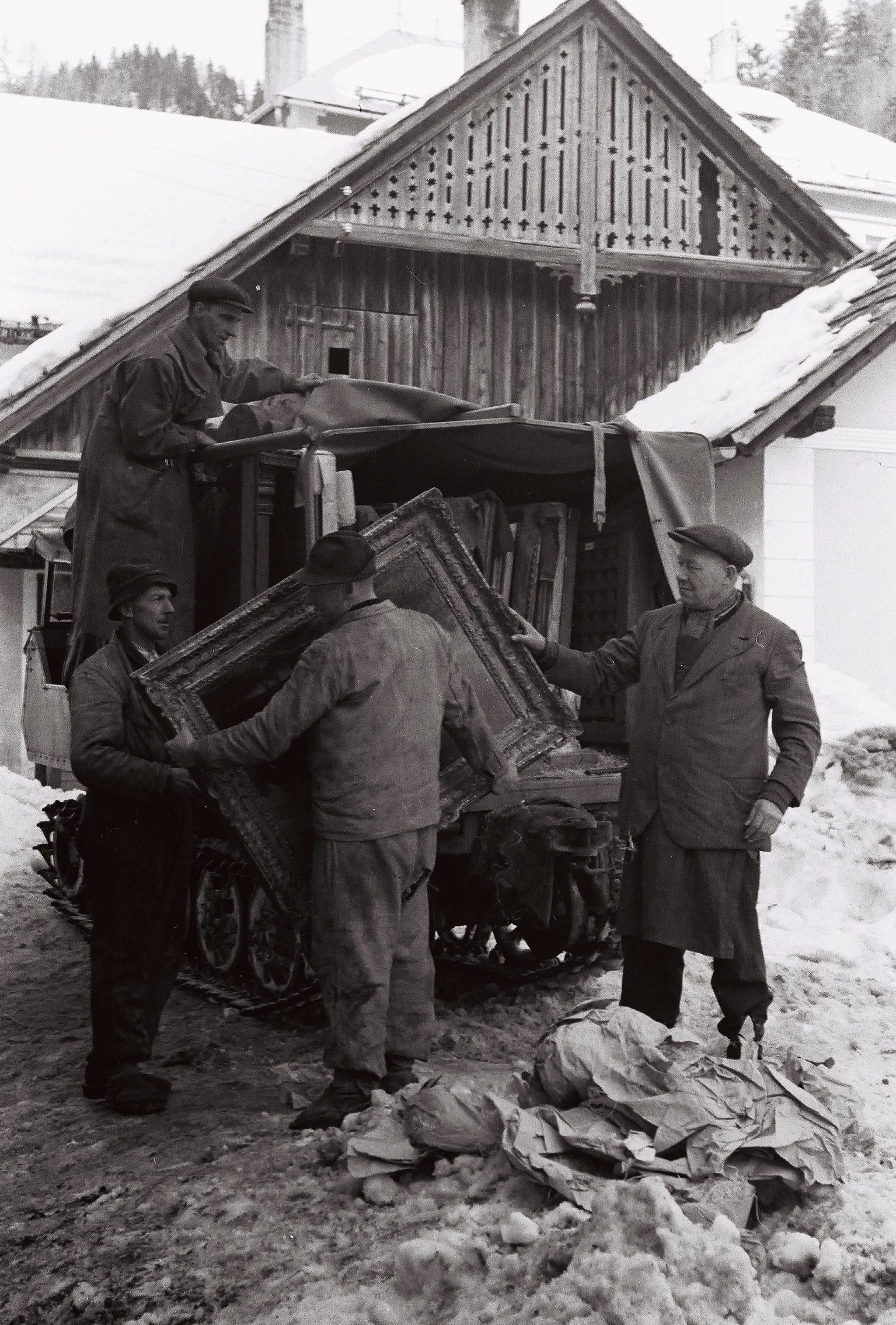
Like no other region in Austria, the Salzkammergut served as a point of transit and salvage for important works of European art history during the Second World War, including art looted by the National Socialists.
After the first bombing raids, exhibits for Adolf Hitler’s “Führer Museum” and works of art from the Schack art collection in Munich were stored in the Altaussee salt mine and in makeshift depots such as inns and churches. Austrian museums also used a mine, the Franz-Josef-Erbstollen (Franz Josef adit) in Lauffen near Bad Ischl in the Salzkammergut, as a refuge facility in 1944/45.

Art transport from the Altaussee salt mine, 1943/44
The exhibition features more than 80 paintings and objects that were collected, stored, retrieved and rescued in the Salzkammergut during the war years. All of the items are on loan from public museums, and their current and historical ownership status is documented in the exhibition. They include artworks that were looted by the Nazis and later restituted to their owners, as well as works of art whose origins are the subject of ongoing provenance research.
Masterpieces from the 8th to the 20th centuries by Arnold Böcklin, Goya, Edvard Munch, Lovis Corinth, Jacob van Ruisdael, Anthony van Dyck, Giovanni Battista Tiepolo, Max Liebermann, Jakob Jordaens, Titian, Moritz von Schwind and Ferdinand Georg Waldmüller, among others, as well as a historical model of the Ghent Altarpiece tell the stories of their odysseys with many stops along the way.
Main Image :Anthony van Dyck, Jupiter as Satyr at Antiope, about 1620
The exhibition The Journey of Paintings from March 28 until September 8 at Lentos Museum, Austria